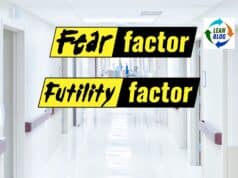The New York subway system has invested nearly $1 billion investment since the early 1990s — and $25 million per year in maintenance cost — in equipping stations with elevators and escalators. The results have been less-than stellar.
According to a recent article in the New York Times,
One of every six elevators and escalators in the subway system was out of service for more than a month last year.
The 169 escalators in the subway averaged 68 breakdowns or repair calls each last year, with the worst machines logging more than double that number. And some of the least reliable escalators in the system are also some of the newest.
Two-thirds of the subway elevators — many of which travel all of 15 feet — had at least one breakdown last year in which passengers were trapped inside.
Now, keeping the NYC subway system running is in many ways a Herculean task. The system serves five million riders per day, and runs 24 hours a day. It's also incredibly far-flung, which slows maintenance responses to breakdowns. And there's all kinds of, um, ancillary abuse:
Elevators become makeshift bathrooms, and escalator steps are pounded by heavily loaded hand trucks.
Notwithstanding those challenges, however, New York City Transit has sown the seeds of its own difficulties by violating key lean principles. Take investment in people:
In private industry, many workers go through a rigorous four-year training and apprenticeship to become elevator and escalator mechanics.
At New York City Transit, newly hired mechanics, many of whom have no experience in the field, are given a four-week introductory course in elevator and escalator maintenance. They are then issued a bag of tools and sent to work, paired up initially with a more experienced mechanic.
There is no requirement for refresher training.
It's not just a private sector/public sector difference, either: the Washington Metropolitan Area Transit Authority created its own training program that includes a four-year apprenticeship with 1300 hours of classroom training.
More significantly, the agency has a culture of trying to solve problems without trying to understand the root causes of the breakdowns.
In many cases, riders were trapped in elevators where a mechanical problem occurred again and again. Some times, mechanics may have lacked the ability to solve the problem. At other times, transit officials said, supervisors failed to see patterns of breakdowns or felt pressured to put the machines back into operation in a hurry even though they needed additional work.
In one particular case, an elevator had broken down five times in the eight days leading up to a serious (40 minute) breakdown. Each time, mechanics came, made minor adjustments and put the machine back in service — only to have it break down again. You'd think that an “Ohno Circle,” or at the very least a “Five Whys“/root cause analysis, would have been not only useful, but ultimately more time efficient and cost-effective.
The transit agency is making important changes. Contractors are now supervised by experienced employees when they install equipment. And there's now a special group of mechanics to conduct tests at key stages of construction.
But there's still an attitude that the mechanics just “have to do better.” After three out of six escalators were found with improperly installed bolts (which caused steps to literally fall out of the machine), Joseph Joyce, the transit agency's general superintendent of elevators and escalators said that he was trying to
[foster] a culture of accountability among his mechanics and managers. “I'm trying to get these guys to think that, you know what, that could be your mom that's walking with a cane and needs that escalator.”
And after the drive chain on another escalator snapped, Joyce said
“They're good mechanics, but they missed something that day. I think they had a bad day that day.”
But as Mark has pointed out many times, this kind of thinking just doesn't work. For one thing, the implicit assumption is that the workers don't care enough to want to do a good job — an assumption that flies in the face of lean thinking. More importantly, no matter how often doctors — or mechanics — are told to be careful, they're guaranteed to make mistakes if they don't have enough training, or sufficient authority to shut down a machine and conduct a root cause analyses, or proper standard work procedures to ensure they don't miss critical steps.
Human beings will always make mistakes. It's management's job to create a process that prevents those errors from occurring. The New York City Transit Authority is moving in the right direction, but at the top level they still need to change the way they think about the problems — and their employees. At $25 million a year, the riders and taxpayers of New York deserve nothing less.
Subscribe via RSS | Lean Blog Main Page | Podcast | Twitter @MarkGraban
Please scroll down (or click) to post a comment. Connect with me on LinkedIn.
Let’s build a culture of continuous improvement and psychological safety—together. If you're a leader aiming for lasting change (not just more projects), I help organizations:
- Engage people at all levels in sustainable improvement
- Shift from fear of mistakes to learning from them
- Apply Lean thinking in practical, people-centered ways
Interested in coaching or a keynote talk? Let’s talk.
Join me for a Lean Healthcare Accelerator Trip to Japan! Learn More










It’s a huge amount of money being invested for welfare of the country and the citizens. It will fruit I the near future.
Comments are closed.